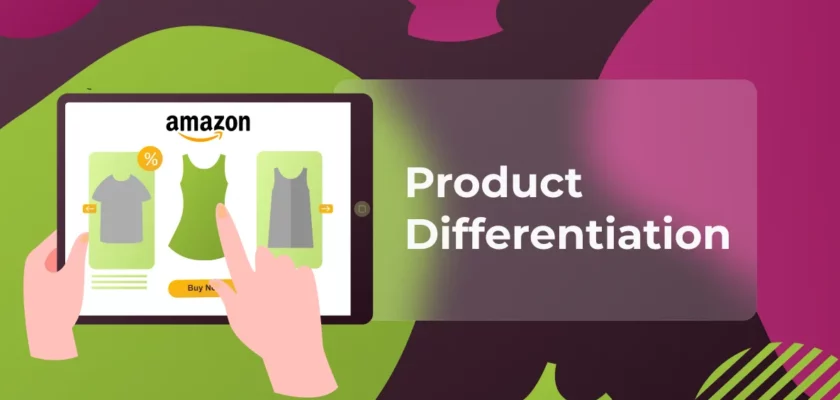Table of Contents
- 1 Why Do You Need to Differentiate Your Products?
- 2 8 Ways of Product Differentiation
- 2.1 Differentiate by origin
- 2.2 Differentiate by packaging
- 2.3 Differentiate by size
- 2.4 Differentiate by branding
- 2.5 Differentiate by capitalizing on a competitor’s weakness
- 2.6 Differentiate by emphasizing product features
- 2.7 Differentiate by adding a simple feature
- 2.8 Differentiate by giving bonuses
- 2.9 Differentiate by great customer service
- 3 Final Thoughts
To make your product compete or outdo your competitors, you need to ensure that it can offer something different to your customers. However, another important factor you should also consider is acquiring customer reviews.
But before that, let’s first talk about product differentiation. Just how can we differentiate our offerings? What ways can you use to ensure that your product is different from that of the other products that fall under the same category as yours?
Before we answer those questions, you should know that if your product can’t stand out from your competitors, it will be hard to make sales. Product differentiation helps your product get easily noticed by your target market. As much as possible, don’t let your product blend with every other product on the marketplace.
Unfortunately, most Amazon sellers are selling similar products to their competitors. They don’t use any unique selling proposition or secret formula to stand out. Instead, they just look for a manufacturer that creates a product or service in a particular niche and sell it for themselves.
Why Do You Need to Differentiate Your Products?
With more than 2 million sellers running their business in the Amazon marketplace, the competitive landscape on the platform is more crowded than ever before. It means that you will need to work much harder to sell and generate conversions — especially if you are offering a homogenous product.
A differentiating strategy based only on price is simply not sustainable. Price wars, where brands aggressively reduce prices in an attempt to seize more clients and market share, are harmful to a business’s health and create many market inefficiencies. To rub salt in the wound, anyone may just grab an item and mark down the price.
All this comes to demonstrate how critical product differentiation is. To make it clear, it is not meant to be a replacement for product research, but instead, you should use it in harmony together to develop the best outcome. The bottom line is that while KPIs such as profit margins, monthly sales, and units sold are necessary, as a merchant, you should not stop at just the numbers. Once you discover an item that has low competition and high demand, it is important to protect your hard work by continually challenging the status quo and implementing innovative solutions to stay up on top.
Let’s explore eight different product differentiation examples and identify the right Amazon differentiation strategy for your business.
8 Ways of Product Differentiation
Fortunately, there are several effective ways that you can be able to differentiate your products. So, without further ado, here are eight differentiation strategies that you can use each time you market any product of your liking:
Differentiate by origin
Although this doesn’t apply to all Amazon sellers, it can apply to most sellers. Let’s take, for example, a handkerchief that labels itself as “handmade in Peru.” If you think about it, the major factor that makes this product stand out among the other products is that it has featured its origin.
Of course, while you just can’t source your product from a village in Peru, for example, you may be able to differentiate your product by including its origin. It is a major differentiator between your product and your competitors.
Another example lies in the company name. For example, Pet Naturals of Vermont has chosen to include Vermont as its origin instead of just going for Pet Naturals. For whatever reason, it somehow feels more natural, safe, and different than the rest.
That said, if your product is manufactured in a specific region, you might want to include its origins so it can get easily noticed.
Differentiate by packaging
For this one, let’s use the previous example, Pet Naturals of Vermont. If you search for their product, you’ll find that their packaging stands out from the rest of their competitors.
While most of their competitors offer products in a bottle, Pet Naturals of Vermont opted to use a bag. It helped them cut down on the overall cost, not to mention it also helped them stand out. In my opinion, the fact that they tied their packaging to that of their brand name, “Naturals,” would give you the impression that they are more on the biodegradable and eco-friendly side, which is always a good thing.
The next time you ask how companies can differentiate products, then take a look at your product’s packaging and think of ways how you can make it stand out. For example, you might want to sell it in a cup rather than a bottle. Or perhaps use packaging that has a unique shape.
Try to be as creative as possible, but don’t go too far out of the box that your customers might find intimidating.
Differentiate by size
Another way to make your product stand out is by mentioning its size. For example, if you want your handkerchief to stand out, you might want to emphasize its size. You might use “extra large” or perhaps “extra small” to attract your customers’ attention.
In some cases, your product might have the same size as your competitors, but none of them use the same label to emphasize their product’s dimensions.
Differentiate by branding
Although branding won’t guarantee you’ll enjoy an increase in sales, you might be able to outdo your competitors by using better branding. It can be the case when your product is similar to your competitor’s. By coming up with better branding, you might just be able to gain the upper hand.
For example, the Everest brand managed to create clean, simple branding that evokes exploration and durability. Let’s compare that with another company within the same niche – Bridger Supply.
I’m not saying that Bridger Supply is a poorly performing company. It’s just that what makes Everest outdo Bridger is the branding. Although Everest’s branding is clean and easy to recognize, Bridger’s branding is quite simplistic, not to mention it doesn’t give off the same vibe or feeling that Everest does.
That said if you plan to outdo a competitor with a similar product, emphasizing your brand may help you stand out.
Differentiate by capitalizing on a competitor’s weakness
A good start will be looking at your competitor’s customer reviews if you want to gain ideas regarding successful product differentiation. As you look at the reviews, you should check for common weaknesses in their product or service. Then, they can be used to gain a competitive advantage, especially in your product’s titles, descriptions, and bullet points.
Let’s take a look at Agogo, for example. When you check the negative reviews made by their customers, you’ll come across one specific complaint: its belt clasp tends to slip after adjusting, requiring frequent readjustment.
Now, if it’s only mentioned once in a single review, it wouldn’t be a problem. The thing is, multiple customers have done the same review, specifically mentioning slippage problems. It gave me an idea of the weakness that I can take advantage of. Using that knowledge, I can use the words “slip-proof” or “non-slip” for the straps when I decide to market my fanny pack.
If you’re struggling to differentiate your product from your competitors, you should choose from three of your competitors and then check their reviews after. First, check the reviews for common complaints, then gauge if you can take advantage of them.
Differentiate by emphasizing product features
Although this might be the easiest option, many Amazon sellers often overlook it. To make it easier for you, let’s use two different fanny pack products as examples: one from Agogo and the other from Value on Style.
The fanny pack from Value on Style includes a feature that says, “Large adjustable strap up to 45 inches”. On the other hand, the Egogo fanny pack uses the words “travel,” “sport,” “fanny,” and “waist.”
Now here comes the problem. If you check Egogo’s listing, you’ll wonder if it can wrap around you comfortably. What’s interesting is that Egogo’s has a longer strap than Value on Style. The only difference is that Value on Style has mentioned it right from the start, while for Egogo, you’ll have to scroll down the question’s section just to find that out.
Albeit having the exact same feature, Value on Style highlighted it. So how can you apply this to your listing?
You can start by knowing if there’s an ingredient or material in your product that no other product is talking about. Then, find out more about that ingredient or material’s benefits and list them in bullet points or place them in the title.
The more you learn about your product’s features, the higher the chances of finding some of the features you can use to differentiate that product from its competitors.
Differentiate by adding a simple feature
If your manufacturer can customize your product, then you have the chance to differentiate your product just by adding a simple feature or perhaps an ingredient. It doesn’t have to be a major difference, just something that can make it different than the other products.
In some cases, you can tweak your product just by including a simple feature without affecting the overall cost of manufacturing it. The possibilities can be endless if you just learn to be creative.
Differentiate by giving bonuses
Another way to differentiate your product is to add an offer or a bonus. It doesn’t necessarily have to be big enough to eat up your profit margin. A simple bonus product will do just fine. Doing so can add a little extra value to your main product.
Let’s take a look at this fanny firm known as Elite Goods.
If you look at their listing, you’ll find that they offer a multipurpose scarf that you can use as a headband, mask, or balaclava as a bonus. There are a lot of purposes you can use for this, but the message is quite clear – you get two products for the price of one! That can actually mean a lot for some customers.
Differentiate by great customer service
It is also important to highlight your product and brand in a crowded Amazon market. Do not forget that customers often come for customer service, as at the present time, it is rather difficult to select the best product. In turn, good service will help you get loyal customers who will come to you next time.
SageMailer is the service that will help you establish a good relationship with your customers. Moreover, it will help you to get more Amazon reviews and, as a result, to increase sales. Finally, and most importantly, it is all automated.
Final Thoughts
Now that you’ve known the eight ways of product differentiation, the next step is to determine where the most lucrative opportunities for your product lie. It will indeed take a lot of time and effort, but the profits you can gain once your customers start to notice will certainly be worth it.
Remember that regardless of how useful or amazing your product is, your customers won’t purchase it unless they can see a number of positive product reviews. Getting many positive product reviews is very important, but this can’t be done if you just make your product look like the rest.


